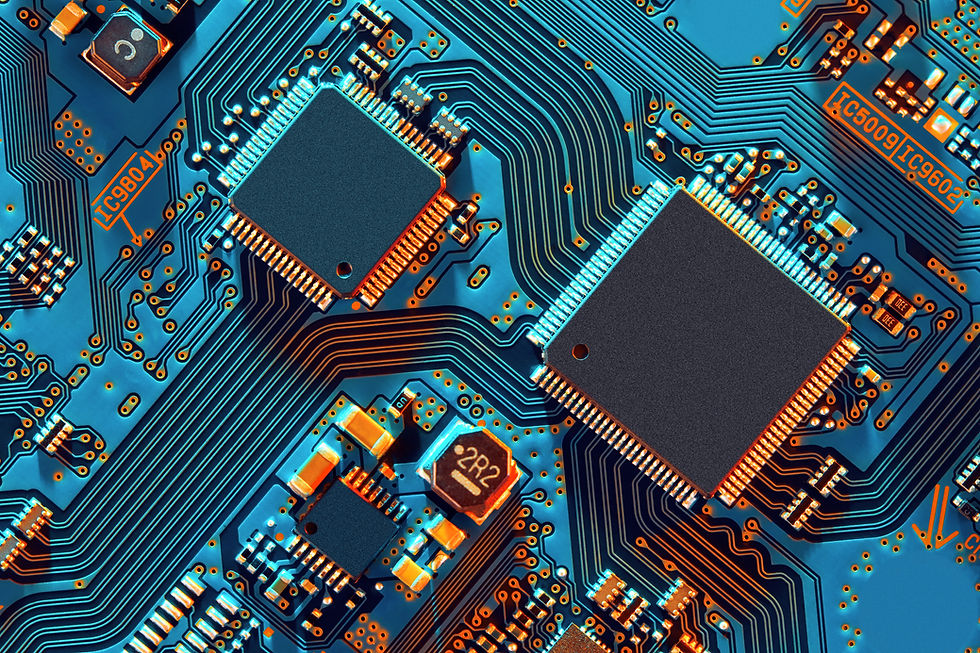Empowering IoT with Edge Intelligence: The Rise of AI at the Edge
- syedzaidulislam
- Feb 23, 2024
- 2 min read
In the rapidly evolving landscape of the Internet of Things (IoT), the integration of Artificial Intelligence (AI) at the edge has emerged as a game-changer, fueling innovation and transforming the way we interact with and harness data from connected devices. Edge AI, the marriage of AI algorithms with IoT devices at the network edge, holds immense potential to revolutionize various industries, from healthcare and manufacturing to smart cities and agriculture. In this blog post, we delve into the significance of Edge AI in IoT devices and explore its myriad applications and benefits.
Understanding Edge AI in IoT Devices
Traditionally, IoT devices have relied on centralized cloud servers for data processing and analysis. While this approach offers scalability and computational power, it also presents challenges such as latency issues, bandwidth constraints, and privacy concerns associated with transmitting sensitive data to remote servers. Edge AI addresses these challenges by bringing intelligence directly to IoT devices, enabling real-time data processing and decision-making at the network edge.
At its core, Edge AI empowers IoT devices to perform complex computational tasks locally, leveraging onboard sensors, processors, and AI algorithms. By processing data closer to the source, Edge AI minimizes latency, reduces bandwidth usage, and enhances privacy by keeping sensitive information within the confines of the device or local network.

Applications of Edge AI in IoT Devices
The integration of Edge AI unlocks a myriad of applications across diverse industries, empowering IoT devices to perform advanced analytics, predictive maintenance, and autonomous decision-making. Here are some notable examples:
Smart Healthcare: In the healthcare sector, IoT devices equipped with Edge AI can monitor patient vital signs in real-time, analyze data for early detection of anomalies, and deliver personalized treatment recommendations without relying on constant connectivity to the cloud.

Industrial IoT (IIoT): Edge AI plays a pivotal role in optimizing manufacturing processes by enabling predictive maintenance of machinery, quality control inspections, and real-time monitoring of production lines. This results in increased operational efficiency, reduced downtime, and cost savings.

Benefits of Edge AI in IoT Devices
The adoption of Edge AI in IoT devices offers several compelling benefits:
Low Latency: By processing data locally, Edge AI reduces latency and enables real-time response, critical for applications such as autonomous vehicles, robotics, and industrial automation.

Bandwidth Efficiency: Edge AI minimizes the need to transmit raw data to centralized servers, resulting in reduced bandwidth usage and lower infrastructure costs.

Privacy and Security: Keeping sensitive data at the network edge enhances privacy and security, mitigating the risks associated with transmitting data over public networks and minimizing exposure to potential cyber threats.

Conclusion
Edge AI represents a paradigm shift in the realm of IoT, empowering connected devices with unprecedented intelligence and autonomy. By harnessing the computational power of Edge AI, organizations can unlock new opportunities for innovation, efficiency, and value creation across a wide range of industries. As the adoption of IoT devices continues to proliferate, the integration of Edge AI is poised to drive transformative changes, shaping the future of connectivity and intelligence in the digital age.





Comments